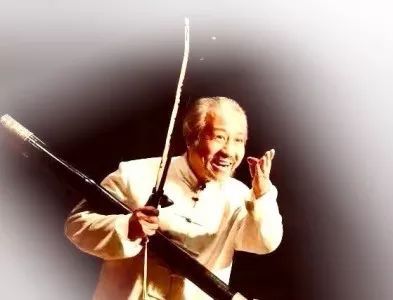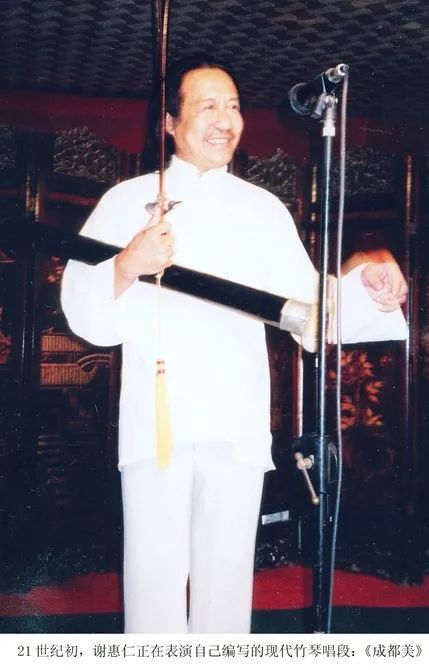Xie Huiren

Xie Huiren, born in 1945, is a native of Chengdu. In 1964, he studied with Yang Qingwen, a famous Sichuan bamboo qin artist, a national second-class actor, a national intangible cultural heritage protection project "Sichuan Bamboo Qin", and a representative inheritor of Sichuan's intangible cultural heritage.

Just looking at the appearance, it is difficult to imagine that he is a traditional qu artist. "Sichuan Zhuqin is not easy to be accepted by others, and it happens that I like it so much. I never thought that I would love it for a lifetime, and I would do it for a lifetime! Hahahaha." During the conversation, Xie Huiren's face was full of pride and confidence.
Sichuan Zhuqin is an ancient Han Chinese opera. The performers hold fishing drums and simple boards to rap stories. Because the accompaniment instrument is a bamboo fishing drum tube, it is also called "fishing drum daoqin" and "dao tube". "Sichuan Zhuqin originally originated in the Tang Dynasty. It has a history of 2,000 years as an accompaniment instrument for court music."
When Taoism flourished in the Tang Dynasty, the bamboo qin has become a must-have for Taoist monks traveling along the street to preach, persuade goodness and give alms. Because the Taoist preaches with bamboo slipboards and bamboo tubes, it is named "Daotong" or "Daoqin (Daoqing)", which means "Dao breaks the world's human feelings". Among the Taoist characters "Eight Immortals", the instrument held in Zhang Guolao's arms is the Daoqin. In the long-term popularization process among the people, this art of speaking and singing based on Daoqu songs and improvising lyrics, Daoqing, has spread all over the country along with Daoism. Then, folk rap artists were born.
In the early days of the Republic of China, "Dao Qing" spread to Sichuan, and was called "Bamboo Tube", "哧嗙嗙", "Dao Tube" and "Bamboo Qin" by folk artists... It was not until the founding of New China that it was renamed "Sichuan Bamboo Qin". The bamboo qin is 3 feet long and 2 inches in diameter, and one end is covered with fish skin or pig intestines. The actor holds the bamboo qin obliquely and slaps the lower end of the bamboo tube with his fingertips; the other holds two bamboo tube boards with small copper bells tied at the top of the boards.
On March 3, 1964, Xie Huiren officially worshipped Yang Qingwen, a famous bamboo qin artist. "Why do I like the ancient bamboo qin? Because I have a relationship with it." Before 1949, Xie Huiren's father owned a gold and silver jewelry store, "One day, my master took my senior brother through the door and accidentally broke it. For the glass treasure cage in the store, my mother called for compensation, but my father was also born in a poor man, saying no, the master is very grateful."
In 1964, Xie Huiren's family was in the middle of the road. "When our family was in trouble, we met my teacher. He just wanted to find a successor for Sichuan bamboo qin. It happened that I also liked the bamboo qin very much. The fate with Zhuqin is a lifetime of love!"

 渝公网安备 50010702504639号
渝公网安备 50010702504639号